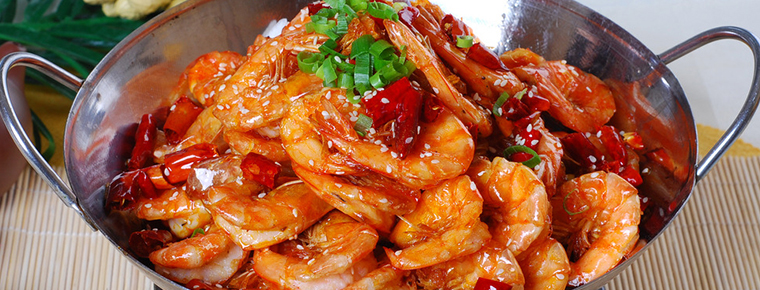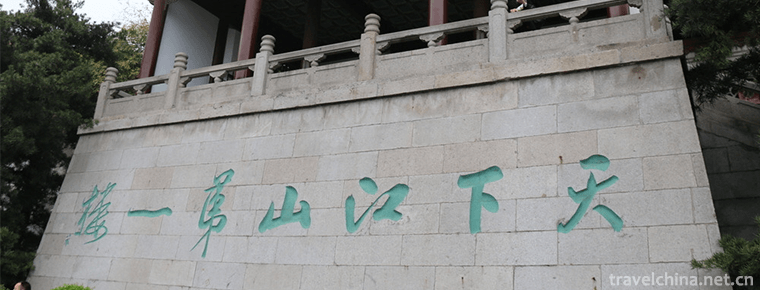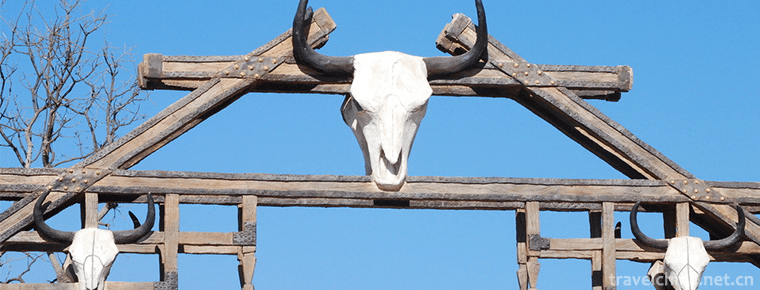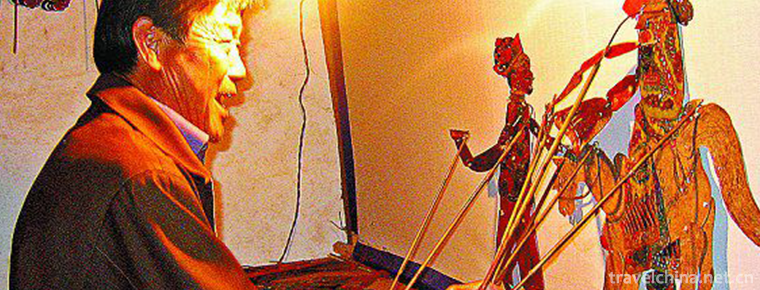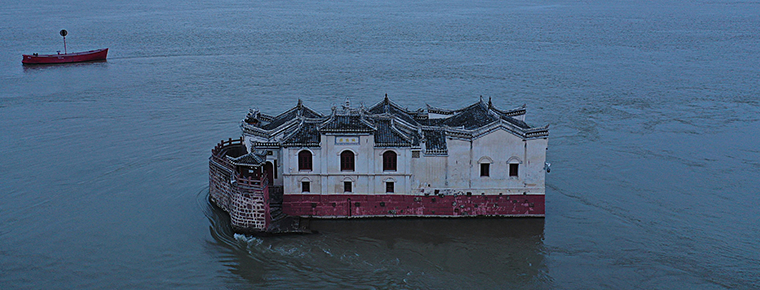The Badaling Great Wall
The Badaling Great Wall is located at the North mouth of Jundu Shanguangou ancient road, Yanqing District, Beijing. It is an important part of the Great Wall, a great defense project in ancient China, and a pass of the Great Wall of the Ming Dynasty. The Great Wall of Badaling is an important outpost of Juyong Pass, which was called "the danger of Juyong is not in the Pass but in Badaling".
The Badaling section of the Great Wall of the Ming Dynasty is called the "Yuguan Heavenly Graben", which is one of the eight sceneries of Juyongguan in the Ming Dynasty. Badaling Great Wall is the earliest part of the Great Wall opening to visitors. Badaling scenic area is dominated by Badaling Great Wall. Badaling Hotel and the Museum of the Great Wall of China, which is named by President Jiang Zemin, have been built.
Badaling scenic spot is a demonstration site of national civilized scenic spot. It is famous for its magnificent landscape, perfect facilities and profound cultural and historical connotation. It is a world-famous tourist attraction.
Beginning on July 29, 2016, the Badaling Great Wall waived admission tickets to servicemen and disabled soldiers.
Ancient construction
According to the records in Historical Records and the census of cultural relics workers, it has been proved that the Great Wall was built in Badaling area during the Warring States Period, but now there are still remnants of walls and piers. Its trend is generally consistent with that of the Great Wall in the present and Ming Dynasties in Han Dynasty: there were military capitals and Juyong Guancheng. The Northern Wei Dynasty Annotation of the Book of Water says, "Juyong is in Juyong, so the name of Guan is also in the south, the valley is in the south, the barrier stone is the site of Guan, and the walls are high and precious. It is not a trivial feat..." Its waters lie in the south of the mountains, and the capital boundary of the ruling army..." Therefore, some experts believe that the Han Dynasty settled in Yongguan and the gate was located in Badaling.
Fifteen hundred years ago in the Northern Wei Dynasty, the Great Wall was built in Badaling. According to "The Ancestors of Wei Shu Shi Benji", the Taiping Zhenjun of Tuoba clan in the Northern Wei Dynasty built the Great Wall north of the capital Pingcheng (today's Datong) in seven years (446). It was named "Ji Shang Saiwei". It started from Shanggu Jundu Mountain in the East (Badaling area) to the west of the Yellow River. Later, he went to Tianbao in the Northern Qi Dynasty for six years (555 years) and built the Great Wall. He started from Datong in the West and went through Shandong, the military capital, to extend the Great Wall to the seaside.
Rebuilt in Ming Dynasty
Badaling Great Wall was built in Hongzhi 18 years (1505) of Ming Dynasty. It has been built for more than 80 years, totaling more than 1300 miles. Qi Jiguang, a famous anti-Japanese general, was brought to the north to direct the defense of the Great Wall, which was part of the great defense project of ancient China, the Great Wall.
Development and utilization
After repairing Guancheng and some of its walls in 1953, it became a tourist area. After many renovations, the tourist area can reach 3741 meters, including 1176 meters in the South and 2565 meters in the north. There are 16 enemy platforms.
In March 1961, the "Great Wall - Badaling" was designated as the first batch of state-level cultural relics protection units.
In 1961, the State Council designated Badaling Guancheng and the city wall as key cultural relics protection units in the country.
Badaling, as an important part of Beijing Badaling-Ming Tombs Scenic Spot, was listed as the first batch of national scenic spots approved by the State Council in 1982.
In 1984, under the initiative of Comrade Deng Xiaoping "Love China, Build My Great Wall", the old Xiongguan changed its new face, and successively repaired 19 enemy buildings with a total wall length of 3741 meters, bringing the total tourist area to 19,000 square meters.
In 1986, Badaling was named one of the 16 new scenic spots in Beijing and the top ten scenic spots in China.
In 1987, it was listed in the World Cultural Heritage List by UNESCO.
In August 1991, Badaling, as the essence of the Great Wall, accepted the certificate of human cultural heritage issued by UNESCO at the Palace Museum in Beijing. In December 1991, Badaling became the top 40 tourist attractions in China with an absolute majority of 370,000 votes because of its famous scenic spots at the naming conference of the forty best tourist attractions in Zhuhai (94 national candidate attractions and 480,000 valid ballots recovered).
In 1992, it was ranked the first in the world of tourism in Beijing.
In 1995, the Badaling Great Wall was named "National Patriotic Education Base" by the Committee of Concern for the Next Generation of China.
In 1998, the Badaling Expressway was built and opened to traffic. The traffic is very convenient.
From 2000 to 2009, more than 500 heads of state, government or ruling party leaders from all over the world climbed the Badaling Great Wall.
On May 8, 2007, the Badaling Great Wall was officially approved by the National Tourism Administration as a national 5A tourist attraction.
geographical position
The Badaling Great Wall is located at the North mouth of Jundu Shanguangou Ancient Road, Yanqing District, Beijing. Longitude 115 degrees 59'52'-115 degrees 59'31''E, latitude 40 degrees 21'9''N-40 degrees 21'15''N. Historically known as one of the Ninth Seizures in the world, it is the essence of the Great Wall. It is unique in the Great Wall of the Ming Dynasty. This section of the Great Wall, with its steep terrain, is an important military pass in the Ming Dynasty and an important barrier to Beijing, the capital. Badaling has a superior geographical environment and has been the main road to Shanxi, Inner Mongolia and Zhangjiakou since ancient times.
Climate condition
Beijing Badaling is located in the northern edge of the North China Plain. It is a typical warm temperate semi-humid continental monsoon climate, with four distinct seasons. Spring flower, autumn moon, summer rain and winter snow have their own characteristics. The annual average temperature is 11.8 C, the coldest January average temperature is - 4.6 C, the hottest July, the monthly average is 26.1 C. The average annual temperature of Badaling is 3 C lower than that of Beijing, and it has become the tourism leader of Yanqing, the "summer capital". Beijing has a shorter spring and autumn season and a longer winter season, with an average annual precipitation of 644 mm and a frost-free period of 180 days.
building structure
The Great Wall of Badaling is a trapezoid with narrow East and wide west. It was built in Hongzhi eighteen years of Ming Dynasty (1505). It was repaired in Jiajing and Wanli years. There are two eastern and Western fronts in Guancheng, "Juyong Town" inscribed in the eighteenth year of Jiajing (1539); the western fronts, "Lock Key of the North Gate", inscribed in the ten years of Wanli (1582). The two doors are brick and stone structures. The coupon cave is a platform. The north and south of Taiwan have their own corridors, which connect the city wall of Guancheng and build pallets around the platform. A total of 1316 piers were built.
The Badaling Great Wall typically shows the magnificent and precipitous features of the Great Wall. As a barrier to Beijing, there are overlapping mountains and dangerous situations. Extremely magnificent city walls circle north and South in the mountains, with no end in sight. According to the mountain situation, the Great Wall confronts the dangerous cliff, and the ancient words "Tian Danger" on the cliff accurately summarizes the military importance of Badaling's position.
Main attractions
Jingshi
Located outside the east gate of Badaling Guancheng, the south side of Qianqian Avenue of Juyong Town is located. It is a natural granite 1 meter high and 15 meters long, inscribed with the words "Wangjing Stone".
Tian Fei remains a topic.
Located in the inside of Dongguanmen, on the cliff above the right of Xiong Paradise. On a chiseled cliff, inscribed with the word "Tian Danger", is the inscription of Liu Zhenzong, Baoyang, on Tong En, Zhizhou, Yanqing, in the fifteenth year of Qingdaoguang (1835).
Playing the gorge
Located at the foot of Wugui (ghost) Toushan, it is one of the scenic spots of Guangou.
Pass
Badaling was originally a pass, and later built the city of Guan. From 1569 to 1582, barriers were built at various ports in Longqing three years (1569) and Wanli ten years (1582). Border towns, shooting walls and horse-retaining walls were built on the hills on both sides of the ports. Later, they were gradually added to the Great Wall, and enemy buildings and piers and abutments were built. Starting from the top of Chuancao Huading, it is about 12 kilometers long from Shifo Temple Estuary, Qinglong Bridge East Estuary, Qinglong Bridge West Estuary, Wangguayukou, Badaling Estuary, Huamuliangkou, Yujiachongkou, Heidougukou to Shixia Valley. Badaling Great Wall, Guancheng, City Wall, Fortress and Juyongguan in the middle of Guangou constitute the complete military defense system of Beijing in Ming Dynasty.
Fork road city
According to the Records of Yanqing Prefecture, "There are two roads at the turnout, one to Huailaiwei, the other to Xuanfu (now Xuanhua) in Yulin, Civil Engineering and Jiming, and the other to Yanqing Prefecture, Yongning Wei and Sihai Zhi in the north." So it is named "fork road". According to archaeological reports, the turnout city of Jiajing in Ming Dynasty (1551) began to be built. After more than 30 years, it was finally built. The whole city was irregular rectangular, with a slight drum in the middle, with two ends slightly reduced to the mountain situation, and the northern city was built on the hillside. The whole city is 510 meters east and west, 185 meters wide north and south, in the shape of a ship. The city covers an area of about 83,000 square meters, and its walls are 8.5 meters high. They are made of stone, brick, lime and soil. There are horse paths on the city, stacks, lookouts and perforations on the outer wall, and two beacon towers on the South wall. The construction of the city wall can be divided into two stages: the early stage is internal tamping, the external stone and lime masonry, and the later stage is outside the original city wall with stone and brick masonry.
Ancient cannon
Exhibited on the road near the entrance to the city in Badaling Guancheng, there were five iron cannons, one of the advanced weapons at that time. The largest barrel is 2.85 meters long, 105 mm in diameter, and has a range of more than kilometers, which is very powerful. The artillery body was inscribed with the words "Grand General bestowed by God" and was manufactured for the eleventh year of Chongzhen in the Ming Dynasty (1638). The gun was transported from Zhangpu, more than ten miles east of Badaling Mountains, in 1958. Four other calf-leg cannons were unearthed during the renovation of the Great Wall in 1957. Hundreds of shells were also unearthed, all of them Ming Dynasty products. According to the record of Wubei Zhi, "In ancient times, stone was made by machine, and the wooden frame of machine was like a tiger squatting. Later, artillery was used, the body was short and thick, so as to send off firebombs. The famous tiger squatted artillery, commonly known as the field chicken artillery, showed the strength of the weapon situation at that time.
Guancheng
Outside the east gate of Badaling Guancheng, there is a temple, a famous Beijing Temple, with the statue of the Great Tragic Buddha chiseled in stone; outside the West gate, there is an archway, and the banner book "Drives Hu Wanli". In the eighteenth year of Hongzhi (1505), when Shaoqing Wu of Dali Temple, a small frontier ministry, built Guancheng, the temples and archways were demolished. There are East and West gates in Guancheng. The lower part of the west wall is built with more than 10 layers of granite strips and the upper part of the wall is built with big city bricks. The wall is more than 20 meters wide, 17 meters thick and 7.8 meters high. The top of the wall is a rectangular platform, 19.8 meters long and 14.15 meters wide, covering an area of 280.17 square meters, with four wall stacks. At 30-40 meters on both sides of the platform, each building has an enemy building, which is connected by a wall and forms a corner with Guancheng. There are two walls on both sides of the West wall, the south wall and the North wall. Both walls are built on the ridge. They are low in the East and high in the west. They are U-shaped and meet at the East gate. The wall is 3.3 meters thick, 2070 meters long and 7.6 meters high. The East-West gate is 63.9 meters apart, and the area of the city is about 5000 square meters. In the eighteenth year of Jiajing (1539), Dongmen was established, and Menfron Shu was "Juyong Town". In the ten years of Wanli, Ximen was established, and Menfron Shu was "Lock Key of North Gate", which was well preserved.
wall
The wall of Badaling Great Wall is 6-9 meters high and its plane is trapezoidal. Its base width is 6.5-7.5 meters and its top width is 4.5-5.8 meters. Most of the top of the wall is broad and flat, which can be "five horses riding side by side, ten people riding side by side". The middle line of the wall is on the outside, the outer wall is high, and the inner wall is low.
Enemy tower
There are 43 enemy buildings in Badaling Great Wall, which are similar in shape and have their own characteristics. They include patrol and sentry wallboards, upper and lower enemy platforms, stacks and shooting holes around the upper level, and accommodation and storage rooms for soldiers on the lower level. The distance of the fortress is based on the mountain topography and topography. All of them are masonry structures. The top of the first and second floors are made of many arch coupons, with ladders up and down. On both floors, there are shooting ports, watchers and spitting nozzles. On the upstairs, there are stacks. The platform protrudes out of the wall and receives the wall inside. Sixteen enemy buildings, such as the fourth floor in the south, the fourth floor in the north and the fifth floor in the north, have been restored.
The fourth floor in the South and north. Located on the South and North peaks of Guancheng, there are four enemy buildings in the South and north, which is the earliest open area for sightseeing. The relative height difference between the two peaks is large and the slope is steep. The enemy buildings stand in turn from low to high, and the north and South correspond to each other remotely. From Guancheng to the fourth floor of South China, the wall is 685.8 meters long and 127 meters high, with an average rise of 1 meter every 6 meters. Between the third and fourth floors, the hill is steep, the city wall runs about 500 meters, and the most dangerous point is the slope of 70 degrees. From Guancheng to the fourth floor of the north, the wall is 767.5 meters long and 155 meters high, which is longer than the distance of the South peak, but gentler than the South peak. After the third floor is saddle-shaped, first down to the saddle and then up to the fourth floor, this section has more than 100 steps. The Great Wall between the eight enemy buildings and the enemy buildings was restored in the 1950s. The four enemy buildings in Beifeng are two stories, only three of them have been restored, the upper stories of the third have not been restored, and the upper stories of the first and second buildings in Nanfeng have not been restored, and the original pavilions on the third floor in Nanfeng have not been restored, and the pillar foundations have been restored. Every building has its original inscribed stone tablets which record the construction process, but no longer exists, leaving only the stele pedestal. In some enemy buildings, the door pivot and the hole of the door bar are dimly visible.
Five North. The enemy building with the largest number of coupon holes. The building is 9.25 meters long and 9.34 meters wide, with two floors. From the coupon door into the first floor, there are many coupon holes, each side of four rows of brick stacks, each stack with the top of the coupon arch, a total of more than 30 coupon holes to hold up the second floor of the ground.
(3) north six floor. The largest enemy building. The building is 12.6 meters long and 8.5 meters wide, and the floor area is about 100 square meters. Long face 7 lines of brick stacking, wide face 4 lines, stacking top vouchers, forming a quadrangular corridor coupon lane, leaving space in the middle, become a rectangular patio. You can climb up the stairs from the patio to the top of the building.
Fourth, the eighth floor of the north. At 888 meters above sea level, it is the highest enemy building of Badaling Great Wall. It is the best place to overlook the Great Wall, so it is also known as the Observatory of Japan. There are two floors in the building. There are ladders to go up. On the first floor, there are six arrow windows facing the enemy, most of which are in the top of the enemy buildings. The distance between Guancheng Platform and the Great Wall on the 8th North Building is more than 1500 meters, and the relative height is 228 meters.
(5) Build enemy buildings with paved buildings. Two of the newly restored enemy buildings were paved. One is the tenth floor in the north and the other is the sixth floor in the south. The Pavilion is a small house built on the second floor, with hard hilltop and carved windows and red pillars.
pier
Also known as Beacon Tower. Outside the Great Wall of Badaling, there are two piers on the East and West hills. The piers are all five feet high, surrounded by small towns, one foot high and five feet high, with hanging towers and barricades, trench suspension bridges and pit traps; water cabinets are placed on the doorway, which are filled with ice in winter and water in summer; steps are not repaired and rope ladders are used to go up and down; each stage has two firearms and artillery doors and 10 guards, which are garrisoned by nearby castles and composed of castles. A deep defense network. In the second year of Chenghua in the Ming Dynasty (1466), it was stipulated that the method of lifting the beacon should be one shot for more than 100 enemies, two shots for more than 500 people, three shots for more than 1,000 people, four shots for more than 5,000 people and five shots for more than 10,000 people.
City platform
Also known as the wall table. It refers to the platform-type buildings which are slightly higher than the top of the Great Wall and are surrounded by concrete walls, stacks and perforations. This is where ancient soldiers patrol and guard, and defend in time of war. For example, the platform on the top of Badaling Guancheng Gate is the city platform.
Battle platform
Battlefield artillery, originally known as "Jiesheng Feikong Qian'an Bian Fa Shen Gun" , was built along the main road of traffic or dangerous terrain along the Great Wall. It is a fortress-style building, with one, two or three floors and different sizes. It can store weapons, ammunition and other strategic materials, and its role is greater than that of enemy buildings. According to the Records of Four Towns and Three Passes written by Liu Xiaozu in the Ming Dynasty, under Qi Jiguang's planning and supervision, a total of 1,200 enemy platforms and battle platforms were built along the Great Wall from Shanhaiguan to Beijing (originally planned to be 3,000). When a war breaks out, the enemy's platform can be "from the top down, with firearms, Franc machines, sub-artillery and mother-and-son guns to hit more" and "use up artillery instead of artillery". A battlefield generally needs 30 people to guard the platform and 30 people to guard the stack. It is divided into six groups, and 300 kilograms of gunpowder are prepared. In addition, there are arrows, iron rods, and thousands of large and small stones on the battlefield, as well as a month's ration and water reserve. This kind of battlefield facility, which can be made more sophisticated and well-thought-out for a long time, can not only attack, but also defend, and cooperate closely with the military facilities such as the city platform on the Great Wall and the enemy platform (enemy building), so as to form a dense fire network, greatly enhance the combat power, effectively block the enemy mounted attack, and play a very important role in military defense. Important strategic and tactical role.
Tourism information
Scenic Area Service
Accessibility facilities and services:
Slopes, blind lanes, barrier-free parking spaces, low ticket outlets, barrier-free toilets, low telephone, wheelchair services.
Parking lot:
The parking lot of Badaling Great Wall Scenic Area can accommodate 1500 motor vehicles. If the number of parking vehicles approaches this level, they will be diverted 2 or 3 kilometers away from the scenic spot to the parking lot outside the nearby wildlife park and west of the turnout village. In order to facilitate tourists, ferry buses will be set up in the scenic spots after the diversion, and tourists will be pulled to the vicinity of the Great Wall Dengchengkou free of charge.
Tickets for scenic spots
Ticket execution time in peak season: 1 April-31 October each year
The Great Wall Ordinary Adult Ticket is 40 yuan
General discount tickets: 20 yuan for students with valid certificates (excluding adult education)
20 yuan of valid certificate for the elderly aged 60 years or over
Minors aged 6 (excluding) to 18 (including) 20 yuan with valid certificates
Personnel enjoying social security pension receipt certificate 20 yuan
Off-season ticket execution time: 1 November - 31 March next year
General Adult Ticket of Great Wall 35 yuan
General discount tickets: 17.5 yuan for students with valid certificates (excluding adult education)
17.5 yuan of valid certificate for the aged over 60 years old (including)
Minors aged 6 years (excluding) to 18 years (including) with valid certificates of 17.5 yuan
17.5 yuan for receipt of social security certificate
Persons with disabilities are free of charge with valid certificates
Children under 1.2 meters are free of charge.
Children under 6 years old are free of charge with valid certificates
Beijing 65-year-old (including) and above old people with valid certificates free of charge
Retired persons are free of charge with valid certificates
Active servicemen are free of charge with valid certificates
Opening Hours
Off-season (November 1-March 31) 7:30-18:00
Peak season (April 1-October 31) 6:30-19:00
Summer (July 1-August 31) 6:00-19:30
Honor
The Badaling Great Wall is the earliest tourist attraction in China. In 2001, the National Tourism Administration first carried out the classification and evaluation of the quality of tourist attractions in China. The Badaling Great Wall was honored to be rated as the 4A tourist attraction. In addition, Badaling Great Wall Scenic Area has also passed the international ISO14001 environmental management system certification and international ISO9002 quality management system certification.
Social evaluation
More than 80 heads of state and government of the world who visited the Badaling Great Wall left their ink treasures and comments here:
"I've been to many parts of the world, and the Great Wall is the most beautiful" - Elizabeth II
Only a great nation can create a great Great Wall
Visiting the Great Wall is like reading an epic poem of the Chinese people, President
Premier of Antigua and Barbuda
The Great Wall is a masterpiece of history and art. Only the Chinese people can build and preserve this masterpiece.
"Visiting the Great Wall, the greatest miracle of mankind, can not be expressed in words. The Great Wall is the link of peace and friendship of mankind" - - President of Argentina
"I hope to prove that I have climbed the Badaling Great Wall of China today by getting the certificate of boarding the city"--Premier Vanuatu
I am honored to be the 332nd Head of State to visit the Badaling Great Wall. This year marks the 40th anniversary of the establishment of diplomatic relations between China and Mexico. I believe this visit will surely create favorable opportunities for further friendly cooperation and cooperation between our two countries.











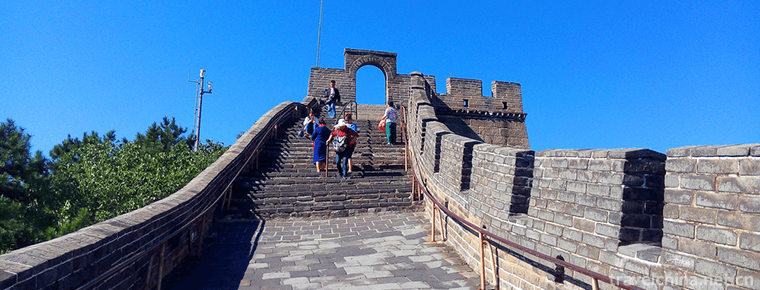
-
Huanghelou Park Wuhan
Wuhan Yellow Crane Tower Park: The Yellow Crane Tower on Snake Mountain in Wuchang is one of the three famous buildings in the south of the Yangtze River..
Views: 158 Time 2018-12-12 -
Ancient Town of Yi Nationality
The ancient town of Yi people is located in the north of Yongan Avenue, the west of Sun Li Park, the east of Longchuan River and the south of Chuda Expressway in Chuxiong Economic and Technological De.
Views: 204 Time 2019-03-04 -
Huang Di memorial ceremony
Yellow Emperor's sacrificial ceremony is a kind of sacrificial music and dance to celebrate Xuanyuan Huangdi's pioneering achievements in Chinese civilization. The theme of.
Views: 122 Time 2019-05-04 -
Shadow Show
Shadow play, also known as "shadow play" or "lantern shadow play", is a folk drama in which characters are silhouetted from animal hide or cardboard to perform stories. During the .
Views: 104 Time 2019-06-09 -
Xibo Folk Stories
Xibo folk tales, Xibo people are descendants of Xianbei people in ancient times. Xianbei was originally nomadic in the eastern foot of the Great Hinggan Mountains, and has been hunting and fishing for.
Views: 197 Time 2019-07-01 -
Guanyin Pavilion
Stand on Ezhou The city's Xiaodong gate dike overlooks the Yangtze River, and a huge reef stands in the center of the Yangtze River. Long pan Ji " It is also known as "Wanli Changjiang first.
Views: 448 Time 2019-09-20 -
Jinhua Alsophila Nature Reserve
Jinhua Alsophila spinulosa nature reserve is a provincial nature reserve approved by Sichuan Provincial People's Government in 1987. In sifangjinggou, Jinhua Township, 48 kilometers southwest of Rongxian City.
Views: 155 Time 2020-10-15 -
Deyang hydrology
The rivers in Deyang City belong to Tuojiang River and Fujiang River system. The main rivers are Mianyuan River, shiting River, Yazi River, Qingbai River, Kaijiang River, etc. The Northwest Mountainous Area of the city is located in the north of Shifang and Mianzhu.
Views: 352 Time 2020-12-14 -
Guangan location
Guang'an City is located in the east of Sichuan Province, with the geographical coordinates of 30 ° 01 ′ - 30 ° 52 ′ n, 105 ° 56 ′ - 107 ° 19 ′ e, 134.5 km from east to west, 93.6 km from north to south, from Linshui county to Dazhu County of Dazhou City, from.
Views: 359 Time 2020-12-19
